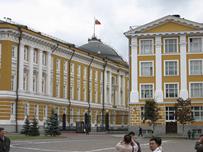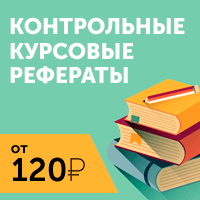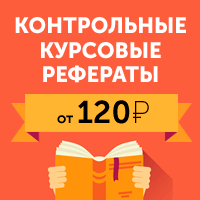 |
Skim the text and define the general message of this text.
|
|
|
|

 Peter the Great officially proclaimed the existence of the Russian Empire in 1721. Under the Romanov dynasty and Peter I (Peter the Great), the Russian Empire became a world power. Ruling from 1682 to 1725, Peter defeated Sweden in the Great Northern War. He forced it to cede West Karelia and Ingria – the two regions lost by Russia in the Time of Troubles, Estland, and Livland. That secured Russia's access to the sea and sea trade. It was in Ingria that Peter founded a new capital, Saint Petersburg.
Peter the Great officially proclaimed the existence of the Russian Empire in 1721. Under the Romanov dynasty and Peter I (Peter the Great), the Russian Empire became a world power. Ruling from 1682 to 1725, Peter defeated Sweden in the Great Northern War. He forced it to cede West Karelia and Ingria – the two regions lost by Russia in the Time of Troubles, Estland, and Livland. That secured Russia's access to the sea and sea trade. It was in Ingria that Peter founded a new capital, Saint Petersburg.
Catherine II (Catherine the Great) ruled from 1762 to 1796 and continued the efforts to establish Russia as one of the Great Powers of Europe.
In alliance with Prussia and Austria, Russia stood against Napoleon's France in the reign of Alexander I (1777–1825) ( Alexander the Blessed).
The prevalence of serfdom and the conservative policies of Nicolas I (1796–1855) impeded the development of Russia in the mid-nineteenth century.
Nicholas's successor Alexander II (reign: 1855–1881) enacted significant reforms, including the abolition of serfdom in 1861. These "Great Reforms" spurred industrialization. However, many socio-economic conflicts were aggravated during Alexander III’s reign and under his son, Nicholas II. Those conflicts as well as World War I brought the Russian monarchy to its downfall.
Work with your desk-mate and decide on the best title to the text above.


Speech Practice
Give the answers to the questions below.
Who proclaimed the Russian Empire?
What way did Russia get access to the sea?
What is Catherine the Great famous for?
What were the reasons that brought the Russian monarchy to its downfall?
Speech Practice
Work with your partner and compose a dialogue.
 |


Vocabulary Training
20. Read and remember the following words and word combinations:


Representative democracy – представительная демократия
Exercise – осуществлять
Vest – облекать, наделять
Federal Assembly – Федеральное собрание
Bicameral – двухпалатный
Deem – считать, полагать
21. Read the following words and expressions and guess their meaning:


National referendum, constitutional crisis, according to, representative democracy, the head of government, two chambers, legislative branch, the commander-in-chief of the military
Translate the following sentences from English into Russian.


The Russian Federation is fundamentally structured (состоит, структурирован, построен) as a representative democracy.
2. Legislative power is vested in (даны, дана, наделена, наделены) the two chambers of the Federal Assembly.
The president can veto (отменить, наложить запрет) legislative bills before they become law.
|
|
|
Judiciary branch (юридическая ветвь, законодательная ветвь, судебная власть) includes The Constitutional Court.
The president will be elected by popular vote (популярным голосованием, народным голосованием) for a five – year term.
Reading
Read and translate the text about new Russia.
Modern Russia
The new Constitution of Russia was adopted by national referendum on 12 December 1993, following the 1993 Russian constitutional crisis.
 According to the Constitution Russia is a federation and formally a semi-presidential republic, wherein the President is the head of the state and the Prime Minister is the head of the government. The Russian Federation is fundamentally structured as a representative democracy. Executive power is exercised by the government. Legislative power is vested in the two chambers of the Federal Assembly.
According to the Constitution Russia is a federation and formally a semi-presidential republic, wherein the President is the head of the state and the Prime Minister is the head of the government. The Russian Federation is fundamentally structured as a representative democracy. Executive power is exercised by the government. Legislative power is vested in the two chambers of the Federal Assembly.
The federal government is composed of three branches: legislative, executive and judiciary.
Legislative branch is the bicameral Federal Assembly, which is made up of the State Duma and the Federation Council. The Federal Assembly adopts federal law, declares war, approves treaties, has the power of the purse, and has the power of impeachment, by which it can remove the President.
 Executive branch is the President. The president is the commander-in-chief of the military, can veto legislative bills before they become law, and appoints the Cabinet and other officers, who administer and enforce federal laws and policies.
Executive branch is the President. The president is the commander-in-chief of the military, can veto legislative bills before they become law, and appoints the Cabinet and other officers, who administer and enforce federal laws and policies.
Judiciary branch includes The Constitutional Court, Supreme Court, Supreme Court of Arbitration and lower federal courts, whose judges are appointed by the Federation Council on the recommendation of the president, interpret laws and can overturn laws they deem unconstitutional.
The president is elected by popular vote for a four – year term. Ministries of the government are composed of the premier and his deputies, ministers, and selected other individuals; all are appointed by the president on the recommendation of the Prime Minister (whereas the appointment of the latter requires the consent of the State Duma).
Leading political parties in Russia include United Russia, the Communist Party, the Liberal Democratic Party of Russia. and Fair Russia.
|
|
|


